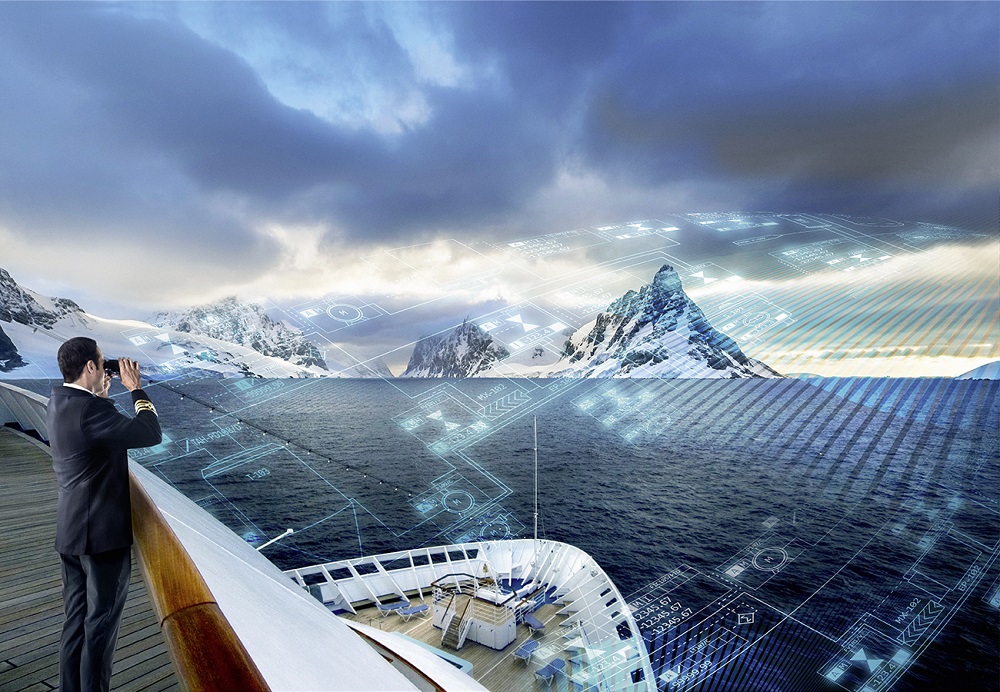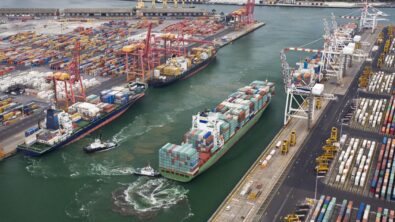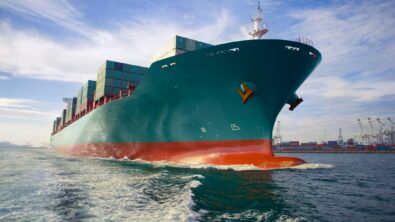Marine STS – The Need for Integrated Simulation in Ship Design – Transcript

In the third episode of the Marine Industry Podcast Series segment on STS in the marine industry, Jan and Dejan dive deep into why integrated simulation is the right tool for future ship design.
Listen to the full episode or continue reading for the transcript below.
Blake Snodgrass: Hello, and welcome back to the third podcast in our marine STS industry podcast series. I’m your moderator, Blake Snodgrass, a writer for the Thought Leadership team at Siemens, and I am joined by our special guests and industry experts, Jan van Os, Vice President of the Marine Industry at Siemens Digital Industries Software, and Dejan Radosavljevic, Director of the Marine Industries at the simulation and test segment of Siemens Digital Industries Software.
Blake Snodgrass: So welcome again, Jan and Dejan. Great to have you here today. When we left off on our last podcast, we were discussing retrofitting for existing ships, and looking at ships that are 12 to 15 years old and whether they should be scrapped or what simulation should be involved, and looking at other traits, and when we left off, Jan was giving his comments.
Jan van Os: Yeah, I fully agree with what you are saying, Dejan. There is no other solution with the complexity of all the options then to do that through simulation. And of course you can choose to put some rotors on your vessel, or to buy a kite, but ship, let’s say, ship operators and owners, they also have to look at their operations and that can fluctuate quite a bit you to all kinds of market circumstances or let’s say geopolitical changes. So they need to be very careful in how much they invest in their vessels, and they need to be sure that what they are investing is being earned back.
Jan van Os: So a careful study of what is interested for them and what is also financial interest, that for them can only be done with a very good simulation. setup of the vessel and all the options and I don’t see another way because the complexity is too much. And let’s say Dejan is the expert in simulation, but if you have some simulation tools and you have the strength of the computers nowadays, you can put it in a loop where they are constantly looking for the best option and you have another simulation, or not a simulation, and even you can look at combined solutions. So can I have sails? Can I have a rotor or can I have an additional nozzle? And all those combinations you can simulate and that’s quite a job if you have to do that without simulation, or almost impossible.
Jan van Os: And if you look at the- I talked about the numbers about the 100,000 plus ships, then you can say, “Okay, they have to be renewed.” But the capacity in our marine industry to replace those vessels before 2040 is not possible. We cannot build 100,000 vessels or a new 100,000 vessels. So there is a whole market for conversion to reduce the footprint. The question is can we or can the market or the industry reduce the footprint to net zero for all the existing vessels? That will be a challenge. I don’t know the answer. I can guess, but I think it’s very difficult to get all the vessels to zero emission and probably they have to come up with some compensation to make their ships zero emission by let’s say buying CO2 rights or whatsoever. But it’s a huge challenge what is happening in our industry. A huge challenge where digitalization is a must and can certainly help to cope with those challenges.
Blake Snodgrass: Yeah, that’s definitely a monumental task. So how do you see Siemens tools being perfect to address what’s going on right now in the marine industry?
Jan van Os: Especially if we discuss simulation, and it’s not only simulation, but our simulation tools can help not only shipyards but ship owners as well, to do all those simulations for new ships, for existing ships to come up with the most cost-effective solution, whatever you choose. So that is important, but it’s also about the CAD system. It’s also about managing of the data, and that we were talking about, we already the talked about some integration, but the integration of those systems is also important. You cannot have just a CAD system or just simulation or just data management. No you have to have a flawless integration to make sure that you can manage the data.
Jan van Os: Let’s say we discussed the simulation, all the different simulations. You should manage that, but maybe there are 1000 options and then you have to manage those options, choose the right one. You do another simulation, you have to go back. So you have to manage and you have to manage the data. So it’s not only important to have the right simulation tool, but also the simulation tool which is connected to a data management system and connected to a CAD system, and Siemens can offer those integrated solutions that we call that integrated ship design and engineering. And that’s the future of shipbuilding. You cannot rely on a separate or are siloed solution anymore. You need to have the integration.
Dejan Radosavljevic: Yes, I would say that Siemens has the full technology framework that enables this approach. And I think in my view it’s the only company that offers this kind of integrated technology framework. So any aspect of ship performance can be simulated. Now, Siemens’s policy also to have an open software approach, which means it can still allow our clients to use other software tools at their disposal. But the most efficient way to meet these challenges is really to work with the seamless integrated environment and that would mean applying the Siemens Xcelerator platform as a technology framework.
Blake Snodgrass: Yeah. Thanks for that insight both Jan and Dejan. This has been a very informative podcast today and before we close out, I was wanting to know if there’s anything else either of you would like to mention that we have not discussed in this episode today.
Dejan Radosavljevic: Well, I mean, I would just, not necessarily that we haven’t discussed, it’s just worthwhile reiterating that it’s a very challenging time for marine industry. I don’t think ever in history it faced this, this kind and the size of a challenge. It’s really difficult I would say today to be a ship owner with so many difficult decisions to be made like where to invest and, you know, like what fuel solutions, what do we do with existing shapes. But I would say as a kind of a comforting message that certainly digitalization and Siemens solutions can greatly mitigate the challenges and really help them answer various questions leading to the best solution tailored to each specific use case they may have.
Jan van Os: Yeah. One thing which I think we didn’t talk about let’s say we talked about the shipyards, the designers, we’ve talked about the ship owners, but we didn’t talk that much about classification societies and Dejan, you have a history in classification.
Dejan Radosavljevic: Indeed.
Jan van Os: But how do you see the role of the classification societies in what’s happening in marine and how ships are being designed in the future?
Dejan Radosavljevic: So yes, I always looked at the class societies as being the leader, technological leader, to point the industry in the right direction and to set an example of how things should be done. And I would hope then we expect them to also now move the industry to this digital future, because I think the old-fashioned plan approval based on drawings, etc., cannot meet current challenges and requirements. So what is needed is the move to digital class where everything is based on CAD models. There are no drawings. And I would say it’s based on simulation.
Dejan Radosavljevic: Now I would even go further and say it should be goal-based simulation rather than prescriptive, which has been a tradition of classification societies. But the problem we have today is that things have to change massively, and prescriptive rules tended to be based on experience. We don’t have time to gain that experience. So it has to start relying on simulation, on first principles and setting goals. So that is the future, I think. And that’s where I expect to our societies to again lead the industry.
Jan van Os: Yeah, I’m agreeing with you. Do you see already classification societies going into that direction? Because let’s say if you look at the whole class society process, we talked about it, it should be more efficient. We need to, let’s say reduce the delivery time for design and build. That means also that the whole process of, let’s say approval has to be let’s say shorter and easier and also more pull than push. So do you see already that classification societies are providing the shipbuilding industry with, let’s say, with more easier tools from their side to improve the approval process?
Dejan Radosavljevic: There are certainly examples and cases where class societies team with industry players, with typically with large shipbuilders, and try to show on a proof of concept how it can be improved. So we’ve seen examples of ABS doing it, DNV doing it. I’m sure BV are doing it. I’m sure everyone is doing it in one way or another. So definitely everyone is recognizing the need. What is further needed is to make that final step. It’s almost like a leap of faith and actually start doing it in anger because at the moment we’ve seen some concept studies.
Dejan Radosavljevic: But what is lacking, and I think that this is currently the biggest pain point, is lack of standardized format for data exchange. And there is some effort in the industry of working on this OCX standard, but that’s not ready yet. And I think in my opinion, the biggest effort is needed to count to a standardized format for data exchange as quickly as possible, because that seems to be the biggest obstacle at the moment.
Jan van Os: Yeah. No, no, I agree. And let’s say one of the things in our industry is that design houses/shipyards, suppliers, ship owners, and class societies have to work together more closely. But in my experience in my career is that they mostly are siloed. And if you really want to use the digital twin and the power of the digital twin, then those parties have to work together to cope with the challenges in our industry and probably that will take some time. And I know that there are steps being taken, but if we really want to get digitalization running to cope with the challenges which our industry has, then we have to get rid of those silos.
Blake Snodgrass: Thank you both Jan and Dejan. Those are very interesting points, and unfortunately we’re out of time for now. But I want to thank you again for your expertise and input into this last episode of the marine STS series, and I want to thank our audience for listening in. We will be having more marine podcasts in the near future. Thank you.
Jan van Os: Thanks.
Dejan Radosavljevic: Thank you.
Siemens Digital Industries Software helps organizations of all sizes digitally transform using software, hardware and services from the Siemens Xcelerator business platform. Siemens’ software and the comprehensive digital twin enable companies to optimize their design, engineering and manufacturing processes to turn today’s ideas into the sustainable products of the future. From chips to entire systems, from product to process, across all industries. Siemens Digital Industries Software – Accelerating transformation.


